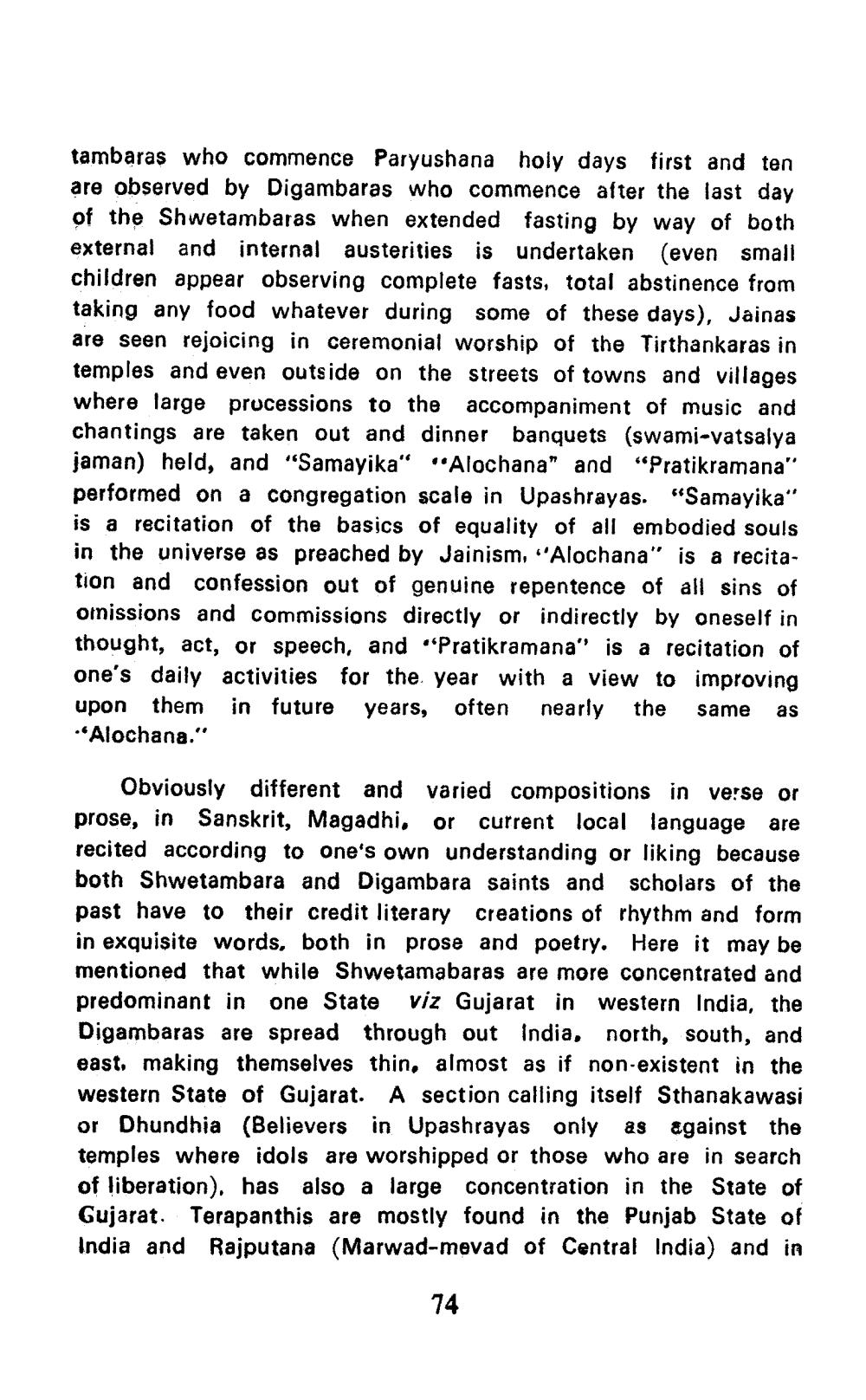________________
tambaras who commence Paryushana holy days first and ten are observed by Digambaras who commence after the last day of the Shwetambaras when extended fasting by way of both external and internal austerities is undertaken (even small children appear observing complete fasts, total abstinence from taking any food whatever during some of these days), Jainas are seen rejoicing in ceremonial worship of the Tirthankaras in temples and even outside on the streets of towns and villages where large processions to the accompaniment of music and chantings are taken out and dinner banquets (swami-vatsalya jaman) held, and "Samayika" "Alochana" and "Pratikramana' performed on a congregation scale in Upashrayas. "Samayika" is a recitation of the basics of equality of all embodied souls in the universe as preached by Jainism, "Alochana" is a recitation and confession out of genuine repentence of all sins of omissions and commissions directly or indirectly by
or indirectly by oneself in thought, act, or speech, and “Pratikramana" is a recitation of one's daily activities for the year with a view to improving upon them in future years, often nearly the same as "Alochana."
Obviously different and varied compositions in verse or prose, in Sanskrit, Magadhi. or current local language are recited according to one's own understanding or liking because both Shwetambara and Digambara saints and scholars of the past have to their credit literary creations of rhythm and form in exquisite words, both in prose and poetry. Here it may be mentioned that while Shwetamabaras are more concentrated and predominant in one State viz Gujarat in western India, the Digambaras are spread through out India, north, south, and east. making themselves thin, almost as if non-existent in the western State of Gujarat. A section calling itself Sthanakawasi or Dhundhia (Believers in Upashrayas only as against the temples where idols are worshipped or those who are in search of liberation). has also a large concentration in the State of Gujarat. Terapanthis are mostly found in the Punjab State of India and Rajputana (Marwad-mevad of Central India) and in
74




